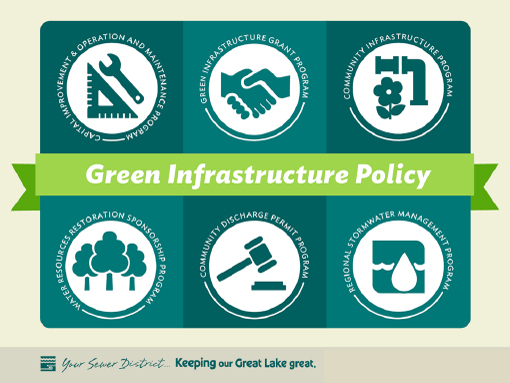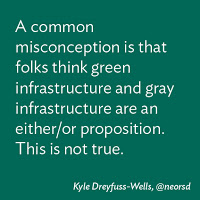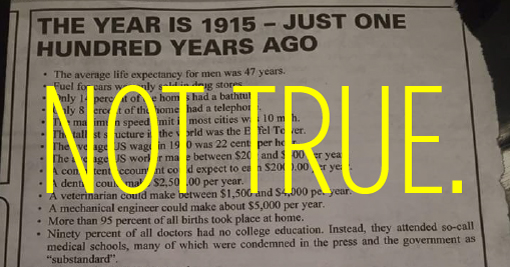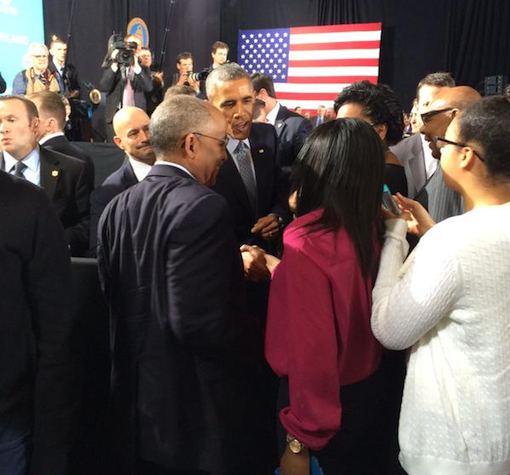
GREEN: 6 ways green infrastructure takes root locally and regionally
Posted by Jared Shepherd
- 3889 Views
- January 7th, 2016
- in Miscellaneous
- No Comments
Protect. Enhance. Preserve. Restore.
These goals are at the heart of the sweeping Green Infrastructure Policy that guides the projects we pursue and helps quantify their benefits to our region.
“The policy demonstrates a commitment,” said Kyle Dreyfuss-Wells, Deputy Director of Watershed Programs. “It lays out a future where green infrastructure is integrated across our program areas to lead the most effective applications of this technology.”
Defining green
Definitions of “green infrastructure” can vary across cities and agencies, but the Sewer District embraces two clear definitions as follows:
Project Clean Lake green infrastructure
Related to our 25-year combined sewer overflow consent decree
The range of stormwater control measures that use plant/soil systems, permeable pavement, or stormwater harvest and reuse, to store, infiltrate, or evapotranspirate stormwater and reduce flows to the combined sewer system.Wet-Weather Program green infrastructure
Stormwater source control measures that store, filter, infiltrate, harvest and reuse, or evapotranspirate stormwater to increase resiliency of infrastructure by reducing stress on wet-weather drainage and collection systems which increase co-benefits in support of healthy environments and strong communities.
Green and gray can co-exist
“A common misconception is that folks think green infrastructure and gray infrastructure are an either/or proposition. This is not true,” Dreyfuss-Wells explained.
“Green infrastructure, or on-site stormwater management, is a tool in the smart stormwater-management tool box, as is gray—or traditional—infrastructure. The best solutions come when people from a range of backgrounds and interests work together to solve stormwater problems and prevent new issues. That is what we are doing at the Sewer District and how we are advancing green infrastructure in our communities.”
Implementing green
We are committed to actively pursuing opportunities across six program areas to advocate for strategic and cost-effective implementation and maintenance of green infrastructure technologies that protect, preserve, enhance and restore the natural hydrologic function of our region’s watersheds.
Further, we seek to maximize the co-benefits provided by green infrastructure projects, including opportunities to expand urban natural areas, enhance air quality, and improve quality of life in Northeast Ohio.
By understanding green infrastructure within these terms, these six program areas allow us to better evaluate and pursue specific opportunities.
1. Capital Improvement and Operation & Maintenance
We will implement combined sewer overflow control green infrastructure projects and seek additional opportunities to invest in green infrastructure that enhances sewer infrastructure capacity as District projects advance.2. Green Infrastructure Grants
We will partner with communities to promote, implement, and maintain water resource projects through the construction of green infrastructure to remove or detain stormwater from separate or combined sewer systems as such opportunities arise through development activities, neighborhood planning efforts, and other partner-driven projects to expand green infrastructure.3. Community Infrastructure
We will assess and fund local sewer system improvements in the District’s service area that effectively employ and maintain green infrastructure where appropriate to resolve water quality and quantity issues that impact human health and the environment. A Community Infrastructure Program is under development and its implementation is pending Board review and approval.4. Water Resources Restoration Sponsor (WRRSP)
We will work with District partners to sponsor projects that protect and improve water quality through preservation and restoration of ecosystem functions in the region’s watersheds, such as floodplain storage, habitat restoration, and streambank erosion control through participation in the Water Pollution Control Loan Fund program.5. Code of Regulations Titles III and IV Community Discharge Permits
We will seek opportunities to use green infrastructure where appropriate to reduce stress on separate and combined sewer infrastructure and support permit compliance through the effective implementation of the Community Discharge Permit Program.6. Code of Regulations Title V Regional Stormwater Management
We will advance the comprehensive management of the regional stormwater system to strategically implement and maintain green infrastructure to help achieve a minimum level of service across the District service area to protect public safety, infrastructure and the environment from flooding, erosion, and water quality concerns.
RELATED STORIES
- VIDEO: See stormwater management techniques in action
- SMART: What are smart stormwater solutions?
- HOME: Improvements you can make at home to manage stormwater, reduce flooding, and more
- FEATURE: How the Urban Agriculture project in Cleveland will plant seeds of knowledge



